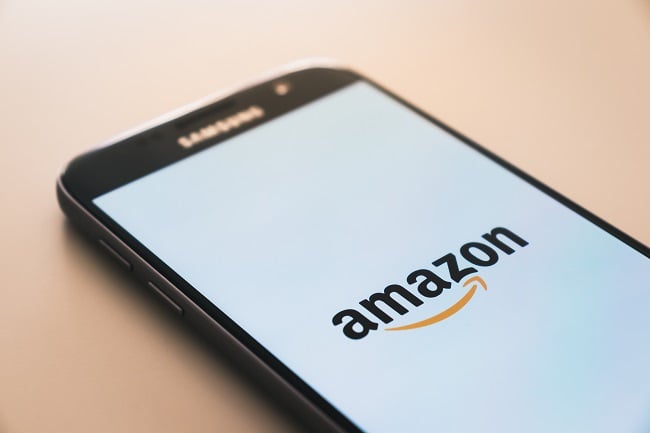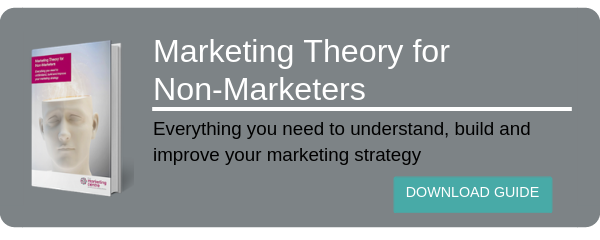In business, it’s not just what you sell that matters, but how and where you sell it. This is your route to market.
Yours could be selling direct; via Amazon, online, or over the phone – whatever works for your customer. The right route to market is the one that makes it easy for new customers to find you, and therefore buy from you. Get it wrong and they’ll go to your competitors instead.
Today, selling via one channel or sticking to what you’ve always known leaves you in danger of being left behind, missing opportunities and losing market share.
By diversifying, tailoring and using more than route to market, you’ll improve your business’ visibility, increase sales and stay one step ahead of rivals. Crucially, you must also review your routes to market at regular intervals – as customers’ changing needs and habits mean that what worked for your business yesterday may not work tomorrow.
- You may like: Barriers to Growth, and how marketing can help
This guide will give you an overview of the different routes to market available, a framework for choosing which new routes to test, and a few case studies to inspire you to take action.
Here’s everything you need to know...
Direct selling
Direct selling cuts out the need for middle intermediaries. Rather than selling via a third party, you sell to customers through your website, on the phone, door-to-door or from a retail space.
If you’re selling niche, highly technical or industry-specific products, this route is likely to be an important one. In meeting customers face-to-face, you’ll have the chance to explain complex products and features, and develop your relationship with them.
It’s important to remember that direct selling requires more staff than other routes to market. Whether on the telephone or the shop floor, you’ll need salespeople trained to sell your product.
Distributors and wholesale
Selling to wholesalers and distributors is a cost-effective means of selling large quantities of a product. They buy from you, in bulk, and sell your products on to other customers or businesses.
Selling 500 units to one buyer is easier than selling 500 separate units, but there are downsides to consider.
Firstly, your profit margin will be lower, because your unit price will be lower than if sold directly. Then there’s your brand.
If you sell wholesale, the end-user is unlikely to know who you are. If your objectives include building your brand and relationship with customers, this route to market is likely to work against you. In any case, businesses that choose to sell via wholesalers or distributors must closely manage how their brand is presented via those channels – as car brands do, for example, via car dealerships. The franchise model is one extreme variation of this model.
Selling via your website
There aren’t many things you can’t buy with the click of a button. In 2017, 1.66 billion of us shopped online – a figure predicted to hit 2.14 billion by 2021.
Selling online means that obstacles of time, distance and location are removed. All you need is a website with a payment system and a way to drive people there.
You will have delivery charges to consider, however – unless you’re offering a click and collect service for customers. If online selling is your only route to market, you may also lose out on customers who prefer physical buying and those who are suspicious of online fraud.
Selling via online marketplaces
Amazon receives over 183 million visitors a month and eBay has 164 million active buyers. Listing your products on these sites will increase your visibility and your sales, by offering a ready-made audience who might not know your brand but could still come across your products when searching for similar items. And selling more means courting new customers who, if treated properly, could become loyal to your brand – especially if you sell the type of products that require repeat purchasing.
The major drawback to these online marketplaces is cost. Your business might see a surge in sales but as most of these sites take a significant percentage of each sale as a fee, the numbers might not be as good as they first appear.
If you’re operating with low margins, you could end up losing more than you gain, so it’s vital to know what your margins are and that you understand the fee structure in place. Amazon, for example, charges a monthly fee for listing your products as well as additional sales fees of 15%, for most product categories.

To a degree, online marketplaces also have a level of control over your business. It doesn’t help them if your brand is in the spotlight; instead, they want customers to focus on product. This means they can control the amount of direct communication you have with customers and which items you are allowed to sell.
For these reasons, it’s important to review the terms of your engagement with any online marketplace on a regular basis – to ensure that their business is still working in the interests of your business. Otherwise, it’s time to choose another route to market.
Distance selling
Catalogues and direct mail can be particularly effective for B2B businesses, as an easy and accessible way to showcase your products.
If you sell a wide range of products with different specifications, this channel gives customers time and space to discover them without being ‘sold to’. In this way, distance selling works well in combination with selling via online marketplaces that drive customers towards your products based on their other purchases.
High-quality design and paper can add value to your customer experience when selling via print catalogues and direct mail if your brand is selling high-value consumer products like luxury holidays. This is less relevant to other brands, like those selling power tools.
It’s also important to note that while some people (usually older generations) like tangible sales material, some will view it as old-fashioned or a waste of resources.
Combination selling
Successful B2B or B2C brands all use multiple channels to sell their products – ’combination selling’. Using a variety of routes to market maximises the number of target customers you can reach, while also helping your business ‘learn’ which routes work best for your offering.
For example, if you sell via your own website and a retailer’s site, you’ll be able to see which performs better, allowing you to adjust your strategy.
Ensuring prices and offerings are kept consistent across all your channels is important. If a customer finds your product cheaper on one website after purchasing it for more on another, this may affect the credibility of your brand.
Choosing the right route to market
There are no good and bad routes to market; only suitable and less suitable ones. It’s essential to review your choice regularly, as what worked for your business 10 years ago is unlikely to be as effective today.
Knowing which route is right for your business comes down to understanding your target audience. To maximise sales and diversify your reach, you must focus on the needs of your customer at every stage of their journey with you.
If you’re selling books, for example, your buyers are unlikely to want a direct sales approach and will probably expect to be able to purchase online and through retailers. If you’re selling a complicated, expensive piece of machinery to an engineering firm, customers will expect face-to-face meetings to develop a relationship and hear about the technical details. Once a relationship is established, however, they’re unlikely to need face-to-face contact every time they order additional items. In this case, you’d need to offer a second route to market.
The best way to find out how and where your customers want to buy is through market research. Questionnaires and focus groups are an effective way to understand your customers’ expectations. Uncovering their buying habits and needs will enable your business to take a strategic approach to testing different routes, rather than guessing.
Once you’ve chosen your route to market, continually evaluate and reevaluate your choice. No market stays the same forever, and you shouldn’t assume that your customers’ needs will do the same, either.
To test your routes to market, promote them to your audience (your existing clients, email subscribers and social media followers) first; they can’t buy from your channels if they don’t know they exist. Then monitor and measure sales and enquiries made via each channel. This will indicate your ROI, so you can determine which are most profitable and which are a waste.
If a route to market is costing rather than making you money, don’t be afraid to scrap it and try an alternative. Your routes to market should always be subject to a process of elimination and innovation – and this evaluation should not stop while your business is successful.
Case studies for success
Finding new routes to market can have a transformative effect on business growth. At one business that our part-time Marketing Directors worked with, expanding into the European market doubled the firm’s sales revenue within 3 months.
Several well-known businesses owe their success to having identified and capitalised on untapped routes to market.
When they first launched, Avon and Ann Summers sold exclusively through private parties in people’s homes; a concept that was considered to be groundbreaking at the time. However, they didn’t just stick with what worked. Instead, both businesses moved with the times and the market. Both now sell online, via direct mail and (in the case of Ann Summers) via retail stores in most city centres.
Amazon and Ocado exist and thrive because they recognised new routes to market which had not yet been used by others. When Amazon launched in the UK in 1998, its founder Jeff Bezos already knew he wanted Amazon to be the first ‘everything shop’ online. He identified a unique route to market: the concept of a bazaar or marketplace at the click of a button. Customers could see the same product from any number of sellers and choose which deal was the best for them.
While it’s easy to focus on your product only, or simply try to mimic your competition’s sales approach, investing time to find the right routes to market for your business will give you a solid foundation to build your sales from. Like so many elements of business, knowing your customer is key.




